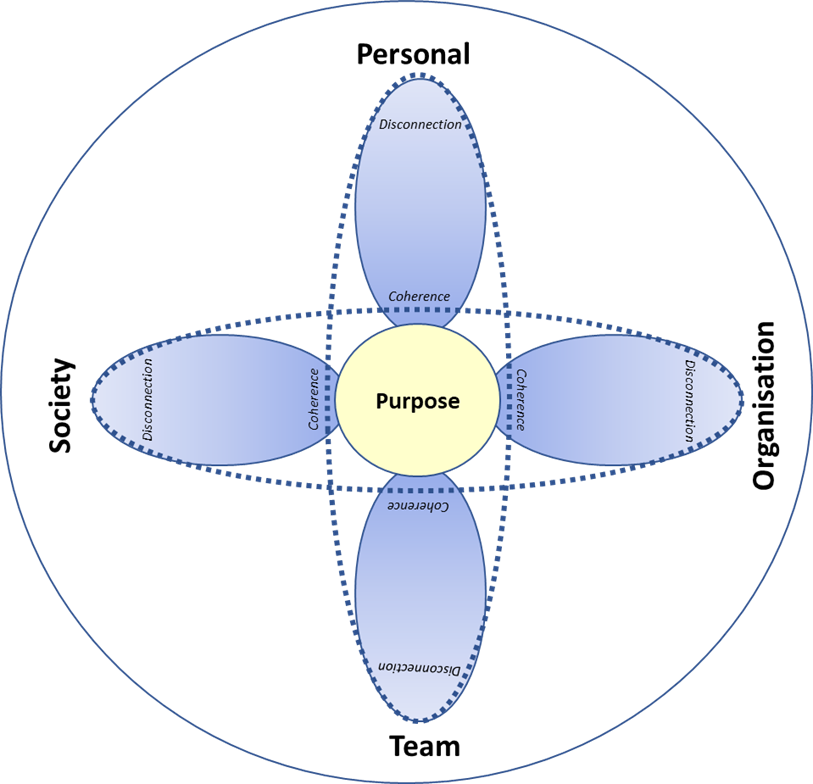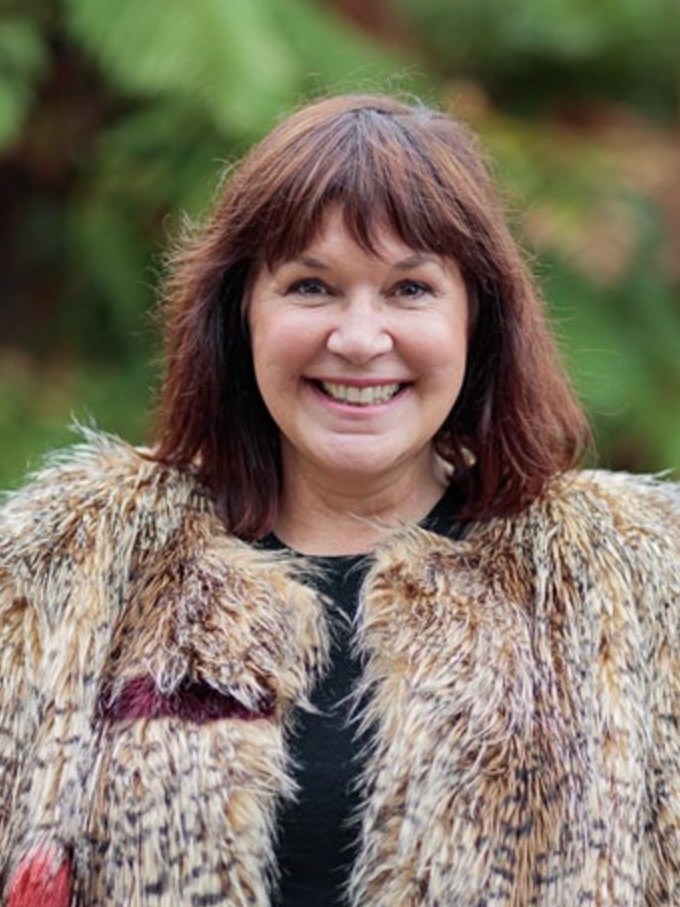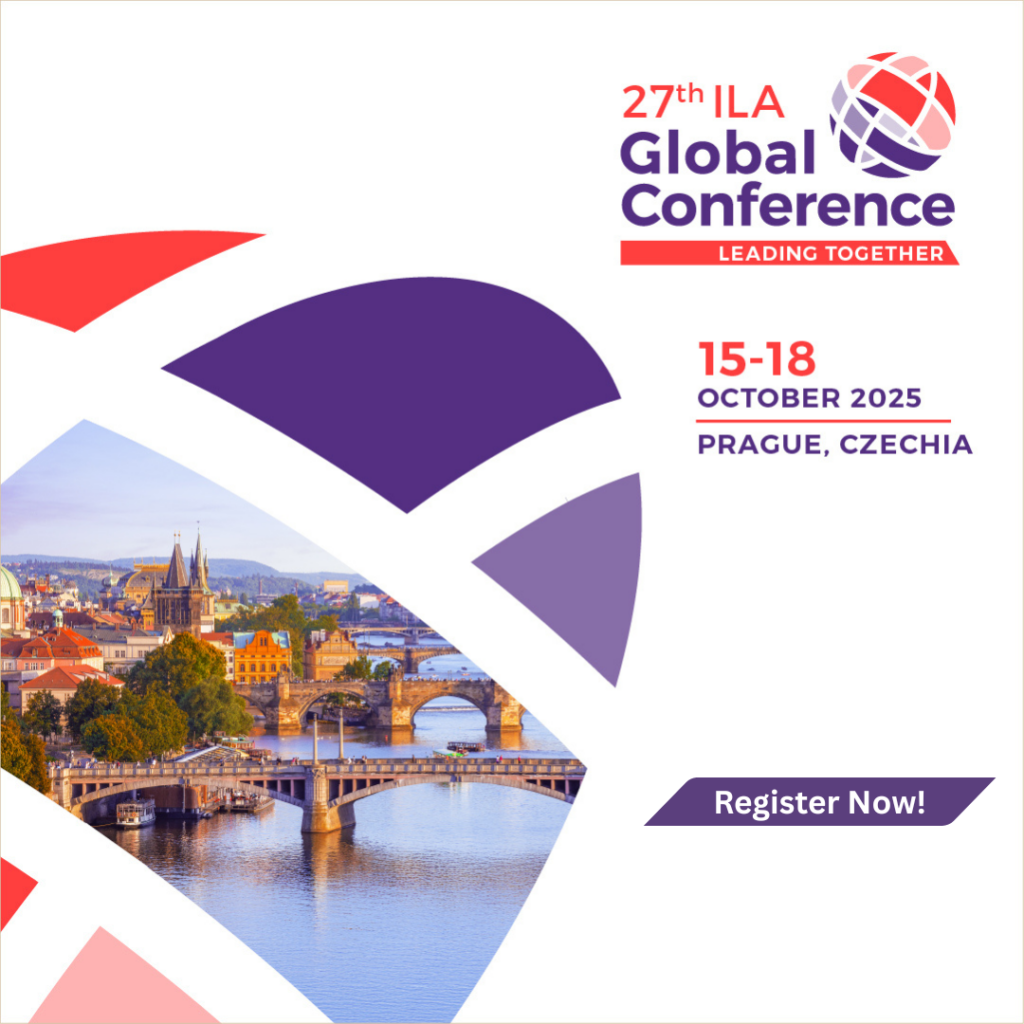
by Dr. Chellie Spiller
- 6 April 2023
Share:
Calling a purpose, as distinct from striving to reach a purpose, is a compelling approach to bringing promise into reality. In organizations, a purpose tends to appear as an abstract ideal that graces boardroom walls, annual reports and screensavers and is removed from the lived reality of the people who work there. A purpose is not an objective or an end goal that we are chasing down; it is a process of unfolding and having clear markers that people orient to. A purpose is not “out there” somewhere we are not; it is in each moment. An important task of leadership is creating a clear, shared, and meaningful purpose in the present.
Calling purpose to you involves paying attention and aligning to what is important — I call this a “Zenith orientation” that puts purpose on the visible horizon. A clear sightline to a Zenith orientation requires us to look up and see the higher potential for creating the future in the present. During difficult times, we need to have our guiding stars about what is really important, so we can stay on track even if we are in unfamiliar waters or feel we are surrounded by darkness. A purpose thereby becomes a vehicle through which individuals can actualize their potential. Peter Senge and colleagues (2004) propose that “when people in leadership positions begin to serve a vision infused with a larger purpose, their work shifts naturally from producing results to encouraging the growth of people who produce results.”
Personal purpose is linked to wellbeing, meaning and happiness.
When people experience a greater sense of personal purpose, they have less incidence of cardiovascular disease and lower mortality (Alimujiang et al., 2019), as well as less loneliness, and they make better lifestyle choices (Kang et al., 2021). Employees experience work as more meaningful if their organization has a clear purpose (Alexander et al., 2016). They are happier and more productive if the leaders demonstrate congruence between what they espouse and their actualized commitment to a vision, stakeholders, and strong morals (Bailey et al., 2017).
Organizations with a clear sense of purpose harvest benefits.
The benefits to organizations of having a clear purpose are manifold. Data collated by Aziz (2020a; 2020b) and Brower (2021) sets out some distinctions between Purpose Driven Organizations (PDO) and Non-Purpose Driven Organizations (N-PDO).
Growth over 10%: PDO 52% N-PDO 42%
Global expansion: PDO 66% N-PDO 48%
Product launches: PDO 56% N-PDO 33%
Innovation: PDO 53% N-PDO 19%
Success in major change efforts: PDO 52% N-PDO 16%
Workforce retention: PDO 40% higher levels
Turnover: PDO dropped by an average of 57%
Society calls for organizations’ purpose to make the world a better place.
Several studies reveal that organizations must serve a greater good; therefore, a functional, profit-securing purpose is not good enough. Aziz (2020a; 2020b), in a series on purpose for Forbes, highlighted a survey by New Paradigm Strategy Group which showed that 80% of respondents say that a company’s purpose should include “making the world better” and similarly, the Edelman Trust Barometer produced a figure of 64% with a similar sentiment. Accenture Strategy’s survey of around 30,000 global consumers revealed that 62% of customers want “companies to take a stand on current and broadly relevant issues like sustainability, transparency or fair employment practices.”
Leaders need to pay attention to this strong market of socially conscious, purpose-oriented, discerning, and critical consumers and investors who are willing to call out lousy corporate behavior and vapid corporate rhetoric and who place their discretionary spending and investing dollars where they believe makes a difference in the world.
A clear sightline to a Zenith orientation requires us to look up and see the higher potential for creating the future in the present.
Put purpose on the visible horizon.
Whilst the motivation for being a purpose-driven organization is clear and compelling, having purpose be experienced as a lived reality for those at work is challenging. How do people adhere to an organizational purpose such that they not only feel they are participating in something meaningful, but they also feel that it is coherent with their own sense of purpose.

In the diagram, I set out a nascent visualization for leaders that embeds purpose meaningfully, relationally, and contextually across personal, team, organizational, and societal levels. To serve wellbeing and make the world a better place, individuals, teams, organizations, and society each need a sightline to an organizational purpose that is reachable, clear, transparent, and authentic.
Aligning
Having a clear sightline to purpose means ensuring it is the zenith orientation for everything an organization does, not only in its comms, policies, and procedures but also in its daily tasks and activities. Encouraging each person to explore how purpose can be expressed in their role is a powerful co-design opportunity to flesh out purpose in specific practice. The more people experience coherence and closeness to the purpose, the more integrated and aligned they will be. The further away purpose seems, the more disconnection there will be. As the diagram shows, people relating individually as well as in their teams, and organizations relating internally as well as to society, will combine as a powerful force in service of a purpose that makes the world a better place. Calling purpose at each of these levels and creating an apparent coherence involves aligning to important markers. For individuals and organizations, this includes values and what matters most, such as wellbeing and making a difference to wider socially responsible good.
Alignment and coherence occur when all parts of the organization are making a meaningful, agentic contribution to the bigger picture.
Becoming
Calling a purpose presents an entirely different set of table stakes than simply having a static, functional goal disguised as a purpose. Dee Hock, the founder of Visa International, said, “a purpose is not an objective, it is not a mission statement – a purpose is an unambiguous expression of that which people jointly wish to become” (cited in Huysman et al. 2003, p. 423). For leaders, this means helping people connect to a shared sense of becoming. In our book Wayfinding Leadership (Spiller et al., 2015), we discuss becoming in the context of purpose in organizations:
The challenge and opportunity in this definition of purpose is to more consciously engage in the process of ‘becoming’ and to fulfil potential personally and collectively…[purpose] is to become the kind of people we want to be as we journey through the waypoints of our life. It is a future orientation of becoming. According to philosopher and tohunga, expert in esoteric lore, Reverend Māori Marsden, the achievement of authentic being is an unfolding process of living an authentic life and that all things are in a process of becoming. (p.42)
The journey of becoming is unfolding in a fascinating way. Younger generations, who have often grown up with an orientation towards embracing leadership that contributes to the flourishing of people and planet, are intersecting in the workplace with older generations who are in the process of unfolding their identities. Goleman (n.d.) highlights the work of German psychoanalyst Erik Erikson who says that around the age of 40, we undergo a shift in self-perception about our identity and “we move towards generativity and begin associating our sense of self with what and how we contribute to the world.” What that means is that multiple generations are coalescing around a sense of purpose that makes the world a better place. A powerful form of succession is occurring, whereby multiple generations, the ancestors of tomorrow, are calling in a better future today.
References
Alexander, A. K., & Douthit, M. W. (2016). The Power of Purpose: How Organizations Are Making Work More Meaningful. In Academy of Management Proceedings (Vol. 2016, No. 1, p. 11489). Briarcliff Manor, NY 10510: Academy of Management.
Alimujiang, A., Wiensch, A., Boss, J., Fleischer, N. L., Mondul, A. M., McLean, K., … & Pearce, C. L. (2019). Association Between Life Purpose and Mortality Among US Adults Older Than 50 years. JAMA Network Open, 2(5), e194270-e194270
Aziz, A. (2020a). The Power of Purpose: The Business Case for Purpose (All the Data You Were Looking for Pt 1). https://www.forbes.com/sites/afdhelaziz/2020/03/07/the-power-of-purpose-the-business-case-for-purpose-all-the-data-you-were-looking-for-pt-1/?sh=243aebd430ba
Aziz, A. (2020b). The Power of Purpose: The Business Case for Purpose (All the Data You Were Looking for Pt 2) https://www.forbes.com/sites/afdhelaziz/2020/03/07/the-power-of-purpose-the-business-case-for-purpose-all-the-data-you-were-looking-for-pt-2/?sh=2817db843cf7
Bailey, K., Shantz, A., Brione, P., Yarlagadda, R., & Zheltoukhova, K. (2017). Purposeful Leadership: What Is It, What Causes It, and Does It Matter? The University of Sussex https://www.cipd.co.uk/Images/purposeful-leadership_2017-technical-report_tcm18-24076.pdf
Brower, T. (2021). The Power of Purpose and Why It Matters Now https://www.forbes.com/sites/tracybrower/2021/08/22/the-power-of-purpose-and-why-it-matters-now/?sh=1ed0d881163a
Goleman, D. (n.d.). Millennials: The Purpose Generation https://www.kornferry.com/insights/this-week-in-leadership/millennials-purpose-generation.
Huysman, H., Wenger, E. & Wulf. V. (2003). Communities and Technologies. Kluwer Academic Publishers.
Kang, Y., Cosme, D., Pei, R., Pandey, P., Carreras-Tartak, J., & Falk, E. B. (2021). Purpose in Life, Loneliness, and Protective Health Behaviors During the COVID-19 Pandemic. The Gerontologist, 61(6), 878-887.
Senge, P. M., Scharmer, C. O., Jaworski, J. & Flowers, B. S. 2004. Presence: Human Purpose and the Field of the Future (1st ed.). The Society for Organizational Learning. p. 141.
Spiller, C., Barclay-Kerr, H., & Panoho, J. (2015). Wayfinding Leadership: Ground-Breaking Wisdom for Developing Leaders. Huia Publishers. p. 42.

Chellie Spiller is a professor of leadership at the University of Waikato Management School, Aotearoa New Zealand. Her research explores wayfinding, authentic leadership and how businesses can create sustainable wealth and wellbeing. Chellie is a co-author of a book on traditional Polynesian navigation Wayfinding Leadership: Groundbreaking Wisdom for Developing Leaders (2015) with Hoturoa Barclay-Kerr and John Panoho. Wayfinding Leadership is a best-selling book for Huia Publishing. It was shortlisted for the Māori Book of the Year awards, 2016. Wayfinding Leadership is included in the list of 150 books by leading Māori authors assembled by the Royal Society of New Zealand to celebrate 150 years of Māori non-fiction publications. Wayfinding Leadership has catalysed a new approach to leadership development that is growing fast and programmes are currently being taught nationally and internationally.
In 2013 her co-edited book with Donna Ladkin, Reflections on Authentic Leadership: Concepts, Coalescences and Clashes (Edward Elgar Press) was short-listed for an international leadership book award. Chellie’s latest book is Practical Wisdom, Leadership and Culture: Indigenous, Asian and Middle-Eastern Perspectives co-edited with Ali Intezari and Shih-Ying Yang. The stories from contributors around the world are illuminating and inspiring.


